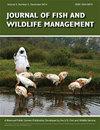濒危本土水生物种的优先保护繁殖
IF 0.9
4区 环境科学与生态学
Q4 BIODIVERSITY CONSERVATION
引用次数: 0
摘要
本土水生物种正在减少,在更大的生态问题得到解决之前,孵化场可以在遏制这些损失方面发挥重要作用。然而,随着越来越多的联邦和州机构面临预算不确定性和濒危物种数量的增加,有必要开发一种工具来优先考虑保护繁殖的物种。我们的目标是创建水生物种的优先列表,这些物种可能受益于美国五个州的保护繁殖。生物学家开发了一个影响图,并提供了影响物种流行的多种属性的信息。利用每个物种的影响图和信息在贝叶斯信念网络中生成分数,以确定物种繁殖的优先级和繁殖的可行性。当所有分类群在一个州内排列在一起时,贻贝、两栖动物和甲壳类动物被包括在鱼类中可能从繁殖中受益的顶级物种中。我们认识到,繁殖是保护濒危物种的一种手段,可能需要解决其他因素,以确保物种的持久性。尽管如此,我们认为我们的定量方法为优先考虑保护传播提供了一个有用的框架。本文章由计算机程序翻译,如有差异,请以英文原文为准。
Prioritizing Imperiled Native Aquatic Species for Conservation Propagation
Native aquatic species are in decline, and hatcheries can play an important role in stemming these losses until larger ecological issues are addressed. However, as more federal and state agencies face budget uncertainty and the number of imperiled species increases, it is necessary to develop a tool to prioritize species for conservation propagation. Our objective was to create prioritized lists of aquatic species that may benefit from conservation propagation for five states in the United States. Biologists developed an influence diagram and provided information for multiple attributes affecting prevalence of species. The influence diagram and information for each species was used in a Bayesian belief network to generate a score to prioritize propagation of a species and the feasibility of propagation. When all taxa were ranked together within a state, mussels, amphibians, and a crustacean were included among fishes in the top species that may benefit from propagation. We recognize that propagation is one tool for conservation of imperiled species and that additional factors may need to be addressed to ensure species persistence. Nevertheless, we contend our quantitative approach provides a useful framework for prioritizing conservation propagation.
求助全文
通过发布文献求助,成功后即可免费获取论文全文。
去求助
来源期刊

Journal of Fish and Wildlife Management
BIODIVERSITY CONSERVATION-ECOLOGY
CiteScore
1.60
自引率
0.00%
发文量
43
审稿时长
>12 weeks
期刊介绍:
Journal of Fish and Wildlife Management encourages submission of original, high quality, English-language scientific papers on the practical application and integration of science to conservation and management of native North American fish, wildlife, plants and their habitats in the following categories: Articles, Notes, Surveys and Issues and Perspectives. Papers that do not relate directly to native North American fish, wildlife plants or their habitats may be considered if they highlight species that are closely related to, or conservation issues that are germane to, those in North America.
 求助内容:
求助内容: 应助结果提醒方式:
应助结果提醒方式:


